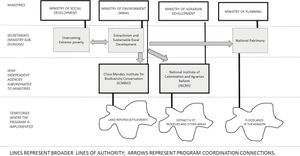The study of cotton somatic embryos has taken a significant leap forward, as researchers employed cutting-edge techniques to detail the molecular intricacies of this complex developmental process. Cotton (Gossypium spp.), one of the world’s most important crops, faces notable challenges concerning efficient tissue culture techniques and genetic transformation. A recent research effort focused on integrating transcriptomic and metabolomic analyses provided fresh insights aimed at enhancing our grasp on cotton somatic embryo regeneration.
At the heart of this research lies the exploration of somatic embryogenesis (SE), where somatic cells revert to totipotent stem cells, capable of generating embryos under specific conditions. Despite being recognized as one of the fundamental regeneration processes for plants, achieving successful SE in cotton has plagued researchers due to insufficient knowledge at the cellular level concerning the gene expression and metabolic patterns involved.
The research team utilized innovative methodologies, including single-cell RNA sequencing (scRNA-seq), spatial transcriptomics (ST), and spatial metabolomics (SM), to conduct comprehensive investigations across the various developmental stages of somatic embryos—namely the callus, globular, torpedo, and cotyledonary stages. By applying these multi-omics approaches, the researchers successfully articulated the dynamics of gene expression and metabolite distribution throughout SE, unearthing details previously dwarfed by conventional analyses.
Throughout the study, the team witnessed significant variations among gene expressions across different cell types and developmental phases. Using the scRNA-seq method, they targeted and profiled the expression of specific genes believed to be pivotal for embryonic growth. For example, the gene AATP1, identified during the globular embryo stage, and DOX2, linked to pro-embryogenic cells, emerged as noteworthy factors supposedly influencing the embryogenesis process.
“We utilized RNA sequencing (RNA-seq) to study cell wall characteristics during the differentiation of A. thaliana endosperm cells and embryos,” emphasized the authors of the article. This comprehensive analytical framework allowed them to chart gene and metabolite interactions, aligning specific gene expressions with distinct embryonic developments.
The research characterized the spatial expression of key genes and their regulatory functions at single-cell resolutions, capturing varying roles during distinct developmental stages. Alongside the profiling of transcriptomes, the study also focused on mapping out the metabolite landscapes through the application of state-of-the-art mass spectrometry imaging techniques.
Among the notable findings, distinct patterns of gene expression were correlated with metabolic shifts, underscoring the procedural complexity behind the transformation of embryogenic callus to mature somatic embryos. Insights from this study have the potential to redefine approaches toward boosting the success rates of SE and improving breeding programs aimed at cotton plants.
The culmination of research results has also directed innovative developments such as the establishment of a publicly accessible online database which will harbor dynamic gene expression data sets and provide valuable resources for future investigations. “This website will facilitate the application of transcriptome data obtained from this work in future studies of callus and somatic embryo development,” the authors noted.
This research not only bridges existing gaps within cotton embryogenesis but also opens avenues for enhanced genetic transformation strategies. By integrating spatial transcriptomics and metabolomics, scientists can anticipate genuine advancements toward solving the challenges posed by traditional tissue culture practices.
Given the pressing need to improve crop yields and genetic resource management globally, findings from this study could play instrumental roles. The push to optimize cotton regeneration processes offers the promise of agrotechnical innovation to meet the growing demands within agricultural sectors—highlighting the importance of scientific exploration at molecular levels.
Through targeted analyses and innovative methodologies, this research presents invaluable data on the developmental characteristics of cotton somatic embryos. The synergies created from integrating multiple omic strategies act as stepping stones to not only dissect complex biological phenomena but also provide fertile ground for future advancements, heralding new possibilities within plant biotechnology.



